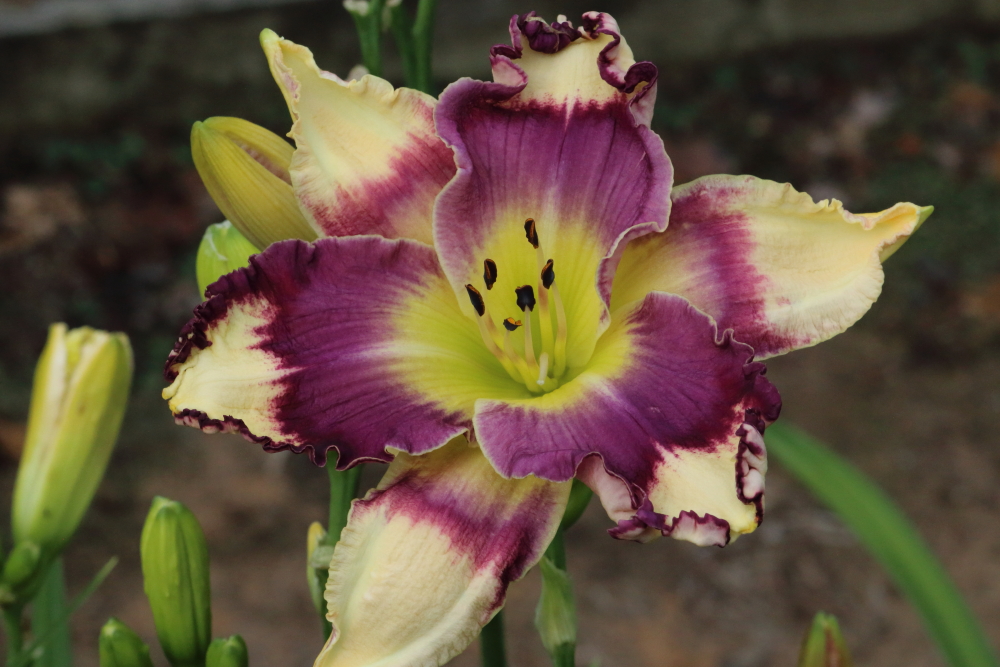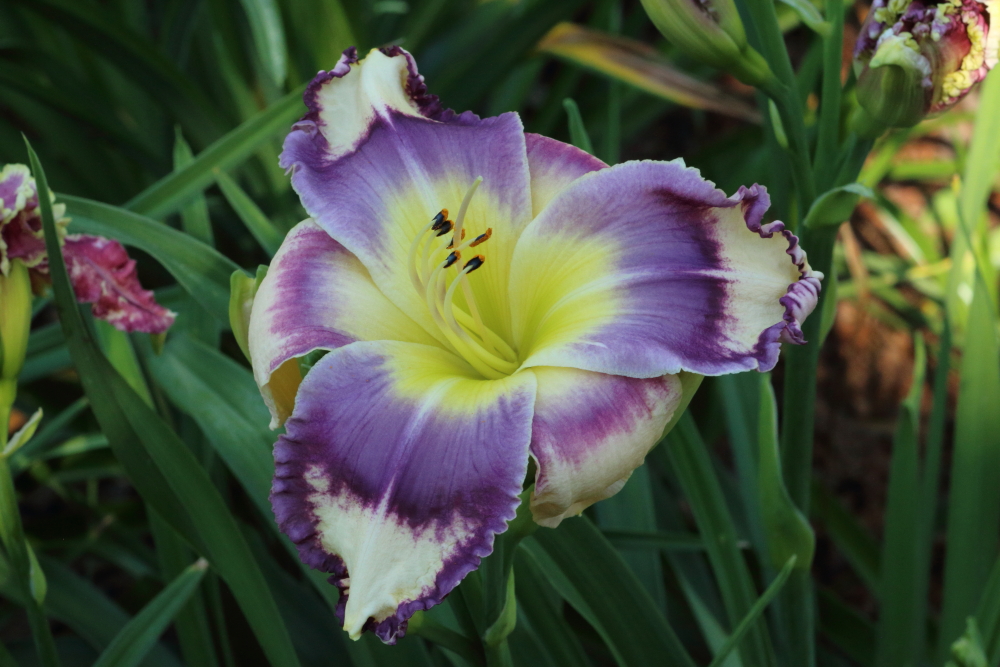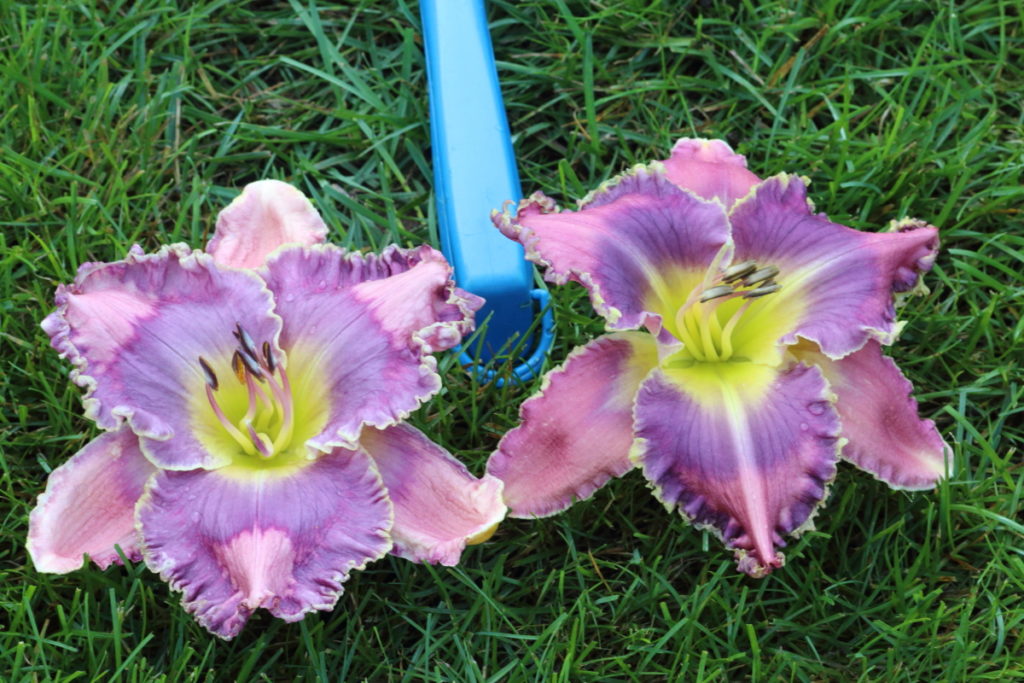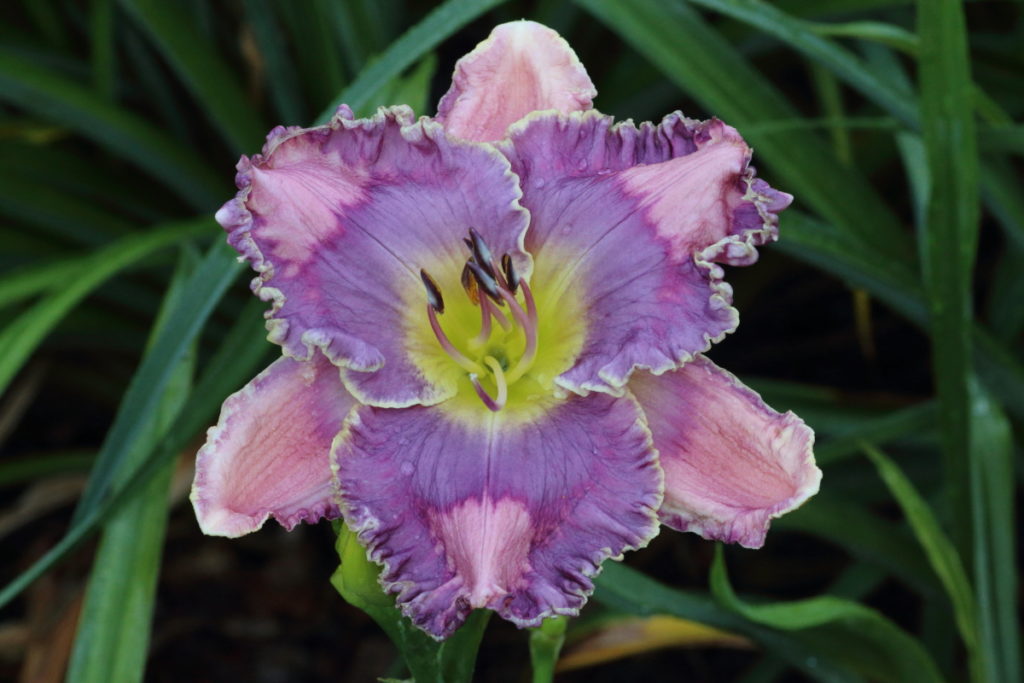Daylilies are often difficult to photograph and get the colors right. Especially difficult are purples and “blue/lavender” eyed flowers. I photograph all my flowers with Canon digital SLR – mainly the 70D model with 100 mm macro or 28-70 mm zoom lenses. Since I photograph nearly every day through bloom season, I have developed a system that seems to work throughout the season.
An advantage of digital cameras (more so with the 70D compared to the older 20D I had which had a small viewer) is that I can view the photo just taken next to the actual flower and see if the color is a good match. I shoot all my photos in RAW format which allows me the ability to adjust the photo outside the camera much the same as I can in the camera. However, I try to match the color in the garden as close as I can as memories can be distorted later.
I use the white balance tool in the camera menu. Mine gives me 9 different settings. Some are Auto, Daylight, Shade, Cloudy, and color temperature. I have found color temperature to be the best tool as I can adjust it depending on sky conditions and natural lighting. As an example, the standard settings of Daylight (5200 K), Shade (7000 K), and Cloudy (6000 K). The higher the color temperature, the warmer (colors more red and yellow) the colors are. I typically shoot photos in the range of 5100 K to 5600 K.
Many years ago, there was a movement among the daylily world to standard colors using the Royal Horticultural Society Colour Charts. This seemed like a good idea but my experience is that daylily flowers vary considerably in color throughout the season and selecting one standard color for a flower will not help a buyer be confident that the flower will look the same each day.
As I looked at last summer’s photos, one extreme example makes an important point. These photos are taken on different days of the same seedling – 922-4.
The photo on the left was taken on 7/26/19 at 7:48 am. I adjusted the color temperature to 4800 K (made it cooler or more blue) to enhance the purple color of the eye versus the reddish color on the original taken at 5100 K. Other photos that day were on the warm side and I suspect it was a cloudy day resulting in warmer natural light. The photo on the right was taken on 7/28/19 at 9:31 am. I suspect this was a sunny day (you can see splash of sunshine on background foliage) with bright blue skies leading to cooler natural light. I adjusted the color temperature on this flower to a warmer 5600 K (less blue and more yellow) due to strong blue skies. So the blue looking flower on the right was adjusted to be less blue while the purple one on the left was adjusted to be more blue. Which one is the right color? Are either the right color? I have to say that both colors are approximately right because that is what they looked like when I took the photo. The difference was in the sky color that reflects on the plant and possibly night time temperatures may cause color variations. Wisconsin low temperatures and humidity vary greatly during bloom season and can impact flower color. By adjusting the camera white balance, I can match the color that day on the photo to what I was seeing in the garden.
In the above photos, I did not make either flower look different than what I observed in the garden. A good check is to look at the green foliage next to the flower. If the foliage is an unnatural blue color, then the flower will be unnaturally blue. If foliage looks consistent with what we normally observe in the garden, then the flower color should be OK. In these two photos, the foliage on the right has a bit more blue in the color but that is consistent with the sky color influencing appearance in the entire garden. Neither foliage is unnatural in appearance.
The above photos were taken on 8/4/19 in shade on a clear day. I used a color temperature of 5500 K (a little warmer than normal) to get the green grass and foliage looking correct. Notice blue plastic handle as a comparison. This example shows what I believe is accurate color for that day. Photo is of seedling 804-6.
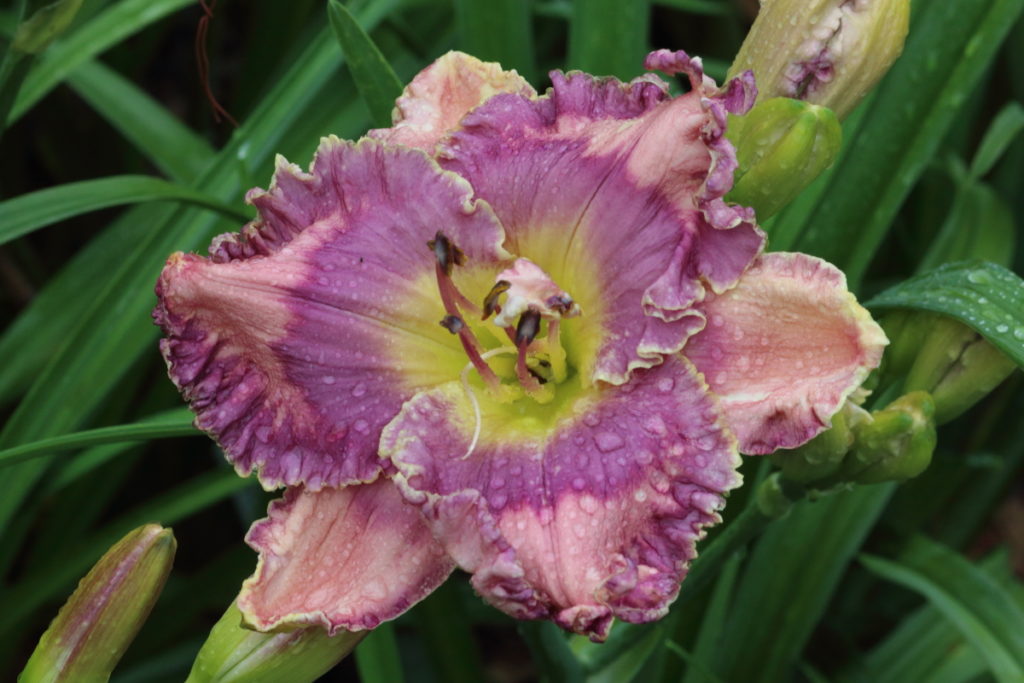
Photo above is same seedling 804-6 taken on 7/29/19. Note water drops from rain. Cloudy skies means no blue light and noticeably different color. I adjusted the color temperature on this photo to 4800 K to get a little more blue tone in the flower that was not showing up on the camera. Again, true color in both photos with lighting heavily influenced by sky color. I also believe that the weather also impacted flower color beyond the sky color.
Photographing daylilies in the garden is a challenge when working with blues, lavenders, and purples. One solution may be to take flowers into a studio with artificial white light and do all photographs there. But that is not the real world in the garden and not practical for most gardeners. Daylily colors will change with temperature and sky color but enjoy the variations. Use your camera tools to get accurate pictures but they will not all look alike. Watch for background colors that may show excessive color manipulation.
